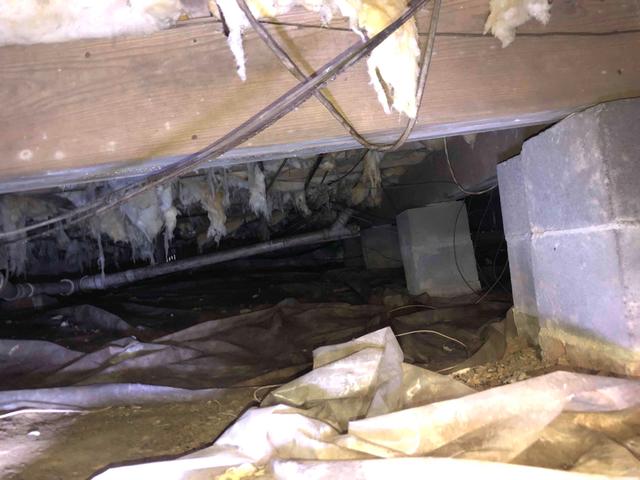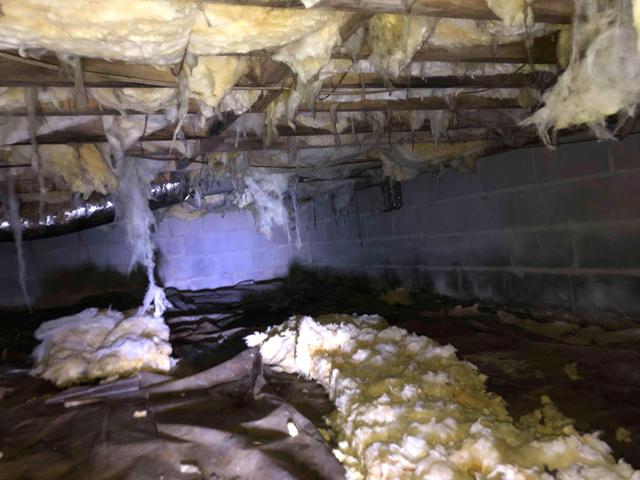CleanSpace Encapsulation System in Ashland, VA
Challenge
This Ashland, VA homeowner contacted us because they had concerns about bulk water coming into their crawl space. During his inspection, Mohammed found that moisture and relative humidity had been wreaking havoc in the crawl space. The existing ground cover was bunched up and damaged, allowing water vapor from the ground into the crawl space. The open vents were also dumping air carrying moisture into the crawl space raising the relative humidity (RH). Warm temperatures and high RH created the ideal environment for microbial growth to occur on organic materials. The Fiberglass insulation absorbed the moisture like a sponge and held it against the floor joists. The moisture collected in the fiberglass insulation made it heavier and the insulation began to delaminate and fall. There were also signs of water infiltration on the foundation walls and efflorescence, a white powdery or chalky substance on the walls, indicating that moisture was pulling minerals in the block to the surface.
Solution
To remedy this homeowner’s concerns in their crawl space, we began by removing all of the old, damaged insulation, vapor barrier, and debris. Next, we used an antimicrobial, Shockwave, to kill any mildew/mold growth. Then, we installed CleanSpace, a 20-mil heavy-duty vapor barrier with UltraFresh antimicrobial built-in. CleanSpace is overlapped and sealed at all seams, wrapped around and sealed to all piers, and installed up the crawl space walls 6-8 inches above outside grade, and sealed. All the vents are blocked from the inside and sealed to prevent air carrying moisture from entering the crawl space. By sealing the vents from the inside, we can avoid changing the exterior aesthetic of the home. Finally, our technicians will apply closed-cell spray foam at an R-10 on the foundation walls. We then install a friction fit door behind an Everlast exterior crawl space door. The friction fit door insulates and air seals the crawl space access and the Everlast door is a PVC door that does not rust, rot, or warp. We always recommend a dehumidifier as the final piece to controlling relative humidity in the crawl space. However, in this case, the homeowner opted not to install a dehumidifier at this time, so we installed a Hygrometer sensor which reads the temperature and relative humidity in the crawl space and sends it to the receiver inside the home allowing the homeowner to monitor the RH in the crawl space.






